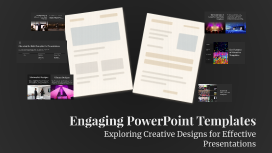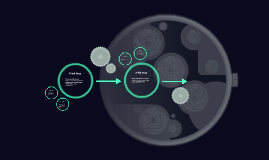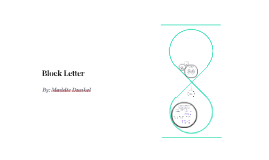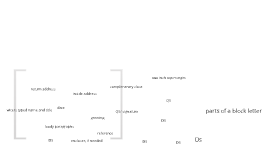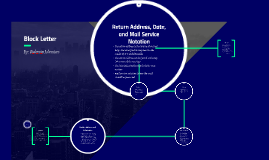Block Letter
Transcript: By: Rahmia Johnston the return address in the top left corner excluding the sender's name the inside address and receiver's name is in the middle to make an envelope on Microsoft Office Word, click the "mailings" tab and click envelope fill information as needed Subject and Body Spacing Inside Address and Salutation Closing write the return address at the top left corner of the envelope include the company name or sender on the first line on the second line write the street address on the third line write the city, state, and zip code to write the date, write the month, the day, and the year for mail service notation, write how the letter should be processed i.e. CERTIFIED MAIL use "sincerely,"or another formal closing leave three blank lines for your signature underneath, write your name, job title, cell phone number, and email with the "no spacing" format write the return address and skip 4 lines write the service mail notation and skip 1 line write the inside address and skip 2 lines write the salutation and skip a line write the subject and skip a line write your first paragraph and skip a line write your second paragraph and skip a line write your third paragraph and skip a line write your closing and skip 4 lines sign the letter in between those 4 lines after printing skip a line and write your name write your title underneath your name in the no spacing format skip a line and write the copy notation How to Write the Return Address, Date, and Mail Service Notation Envelope Return Address, Date, and Mail Service Notation Block Letter the inside address is the receiver's address include the person's name on the first line, job title on the second line, company name on the third line, on the fourth line include the street address, and on the fifth line include the city, state, and zip code when writing the salutation, include personal title and receiver's last name the return address is the information that helps the letter find its way back to the sender if it is undeliverable the return address can be found at the top left corner of the envelope the date indicates the day the letter was written mail service notation is how the mail should be processed Definitions the subject is what conveys to the reader the idea of what the letter is about the subject is very short and to the point for the body, be sure that you are in left alignment and no spacing leave a blank line between each paragraph the first paragraph is the introduction so you must explain the reason for writing the letter the second paragraph should use supporting details of your main point in the third and final paragraph, give your contact information and thank them return address- the sender's address inside address- the receiver's address mail service notation- instructions to the mail room on how to process the letter salutation- greeting that starts the letter subject- few words that describe the main idea of the letter body- intro, explanation, and thanks of the letter enclosure- informs the recipient about other documents in the letter copy notation- tells who else the letter is going to







